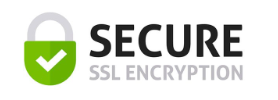Founded in Denmark. We respect your privacy.
Join a worldwide community of language learners
Are Writing Systems Holding You Back? The Secret History Behind How Scripts Shape Your Language Learning
Last updated on
Every language you encounter brings with it a unique script and writing system. From the flowing syllabary of Japanese hiragana to the angular characters of Cyrillic and the alphabet you’re reading right now, writing systems are the silent partners in your journey to spoken fluency. Yet, these scripts can pose unexpected obstacles — or hold hidden advantages — that impact your speaking confidence and comprehension more than most learners realize.
Have you ever wondered why learning to speak a new language sometimes feels daunting even when you know the words? The answer is connected to scripts, and there’s a fascinating historical twist that may forever change the way you approach language practice. We’ll uncover this twist near the end — but first, let’s explore why writing systems matter.
Different Scripts, Different Mindsets
Scripts do far more than record spoken words; they influence how you process sounds, memorize vocabulary, and develop accent. For example, Japanese learners often struggle with native-like intonation when reading kanji, since the symbols don’t give direct clues about pronunciation. Meanwhile, scripts like Arabic or Hebrew omit vowels in writing, which creates guessing games for beginners and impacts spoken recall (read more on abjads on Wikipedia).
Roman alphabets offer clues through spelling regularities, but can introduce traps too — think of English, where words like colonel and though offer little help in sounding them out. Learners whose native languages are non-alphabetic (such as those using Chinese characters) often face greater hurdles when transitioning to alphabetic scripts, and vice versa. These cognitive mismatches have been discussed in recent linguistic research (see studies via Google Scholar).
The Brain’s Shortcuts: Speaking vs. Writing
Reading and writing activate different neural pathways than speaking and listening. According to educational experts and neuroscientists, scripts act as a kind of filter on pronunciation and memory (Britannica: Writing and Society). If you learned your second language with a heavy focus on reading and writing, you may unconsciously “hear” words as they look on the page — sometimes reinforcing inaccurate stress or intonation. For example, Spanish learners who focus on text might overly rely on word endings, missing the rhythm and speed of real conversations.
This is why platforms like Talkio’s simulated conversation exercises and oral practice tasks are so crucial: they encourage you to break free from what’s written and focus on what’s spoken.
Script as a Cultural Tool
The shapes and systems of writing reflect not just sounds but whole cultural histories. In some cases, reform movements sought to simplify scripts to aid literacy or standardize pronunciation (for example, the Turkish switch to a Latin alphabet in the 1920s — an event that rapidly changed national literacy rates and perception of Turkish speech). In other cultures, writing systems preserve ancient ambiguities or complexities, offering a living link to linguistic pasts (National Geographic: How the Alphabet Changed the World).
This means that when you struggle with a script, you’re not just facing an individual challenge — you’re encountering centuries of cultural, political, and educational evolution.
Can You Bypass Scripts to Improve Speaking?
Modern language learning science increasingly recommends focused listening and speaking practice, especially in the earliest stages. Some polyglots suggest delaying intensive reading to avoid fossilizing mistaken pronunciations. AI-powered tools such as interactive learning partners allow you to concentrate on conversation before writing, an advantage impossible to imagine a generation ago.
Curious about which language scripts are the most challenging or why some learners seem to “hear” in their target language much faster? The answer lies in a surprising, often-overlooked detail about how, and why, writing systems evolved in the first place.
The Big Reveal: Scripts Were Never Invented for Speaking
Here’s the fascinating twist: writing systems emerged not as simple mirrors of everyday speech, but as complex codes designed for record-keeping, religion, or the elite — often distilling, reshaping, or even replacing the spoken language over time (History.com: The Invention of Writing). This means the gap between how we speak and how we write is, in fact, built into most world languages by design.
So, if writing sometimes slows your speaking progress, don’t blame your memory or vocal skills — you’re navigating a challenge as old as civilization itself! By understanding the history and purpose of scripts, you can become a more intentional, confident language speaker, recognizing when, and how, to let go of the written word and let your voice lead the way.
Talk Your Way
to Fluency

Talkio is the ultimate language training app that uses AI technology to help you improve your oral language skills!
Try Talkio

